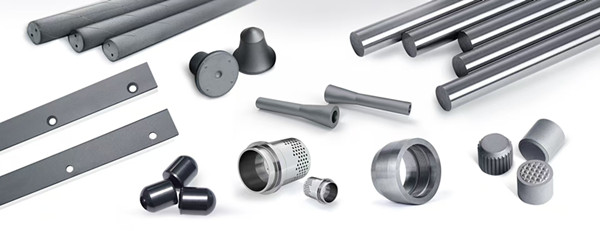What is wolfram carbide? What are its functions and uses?
Another name for wolfram carbide is tungsten carbide, which is an alloy material consisting of hard compounds of refractory metals and bonding metals, manufactured through powder metallurgy. The characteristics are as follows:

1. Performance characteristics
– High hardness: Wolfram carbide is known for its exceptional hardness, particularly at elevated temperatures, enabling it to maintain its hardness in harsh environments such as those with high temperatures and pressures.
– Good wear resistance: Due to its high hardness, tungsten carbide exhibits excellent wear resistance. In scenarios involving friction and wear, the service life of tungsten carbide is typically much longer than that of other materials.
– Good strength and toughness: Wolfram carbide possesses not only high hardness but also a certain degree of strength and toughness, making it less prone to breakage or damage under loads such as impact and vibration.
– Heat and corrosion resistance: tungsten carbide demonstrates good resistance to heat and corrosion, allowing it to function effectively in harsh environments over extended periods.
2. Main components
– Hard compounds: Primarily carbides of refractory metals, such as tungsten carbide (WC) and titanium carbide (TiC), are used. These carbides are characterized by their high hardness and melting points, and they constitute the main components of cemented carbide.
– Bonding metal: Primarily metal cobalt (Co) or nickel (Ni) are used. These metals possess good plasticity and toughness, effectively binding the hard compound particles to form a dense alloy structure.
3. Manufacturing process
The manufacturing process of tungsten carbide primarily involves powder making, mixing, pressing, and sintering. Initially, the refractory metal carbide and bonding metal powders are evenly mixed in a specific ratio; then, the mixture is pressed into a blank of the desired shape; finally, the blank is sintered at high temperature to achieve a dense tungsten carbide product.
4. Application fields
Wolfram carbide is extensively utilized across various fields due to its outstanding performance:
– Tool material: Tungsten carbide rods and plates are principal materials for the manufacture of cutting tools, such as turning tools, milling cutters, planers, drills, boring tools, etc. These tools perform well when cutting materials like cast iron, non-ferrous metals, plastics, chemical fibers, graphite, glass, stone, and ordinary steel.
– Mold material: Tungsten carbide blocks is also used to create various molds, including wire drawing molds, bolt molds, nut molds, etc. These molds are crucial in metal processing, plastic processing, and other fields.
– Mining tools: In mining, construction, and other industries, Tungsten carbide is widely used to manufacture rock drilling tools, mining tools, etc. These tools maintain good performance even under harsh working conditions.
– Other fields: Wolfram carbide is also used to manufacture measuring tools, wear-resistant parts, metal abrasives, cylinder liners, precision bearings, nozzles, etc. Additionally, Wolfram carbide finds extensive application in aerospace, optics, and electronics.
Our company is among China’s top ten cemented carbide manufacturers. Should you require cemented carbide products, please contact us.
